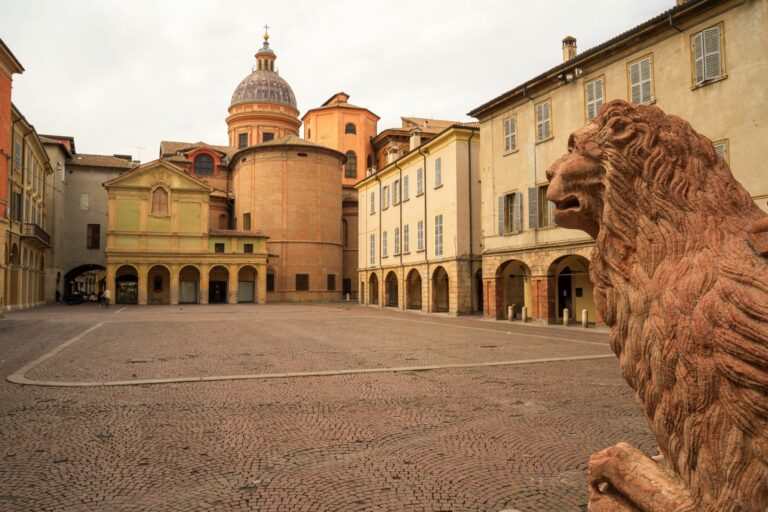“I Borghi più belli d’Italia” (Italy’s Most Beautiful Villages) is an association founded in 2002 with the aim of enhancing and promoting the great heritage of history, art and culture found in small Italian towns. More than 350 selected and certified villages belong to it. In the provinces of Reggio Emilia, Parma and Piacenza there are currently 6 villages that can boast this prestigious recognition. Let’s find out which ones they are!
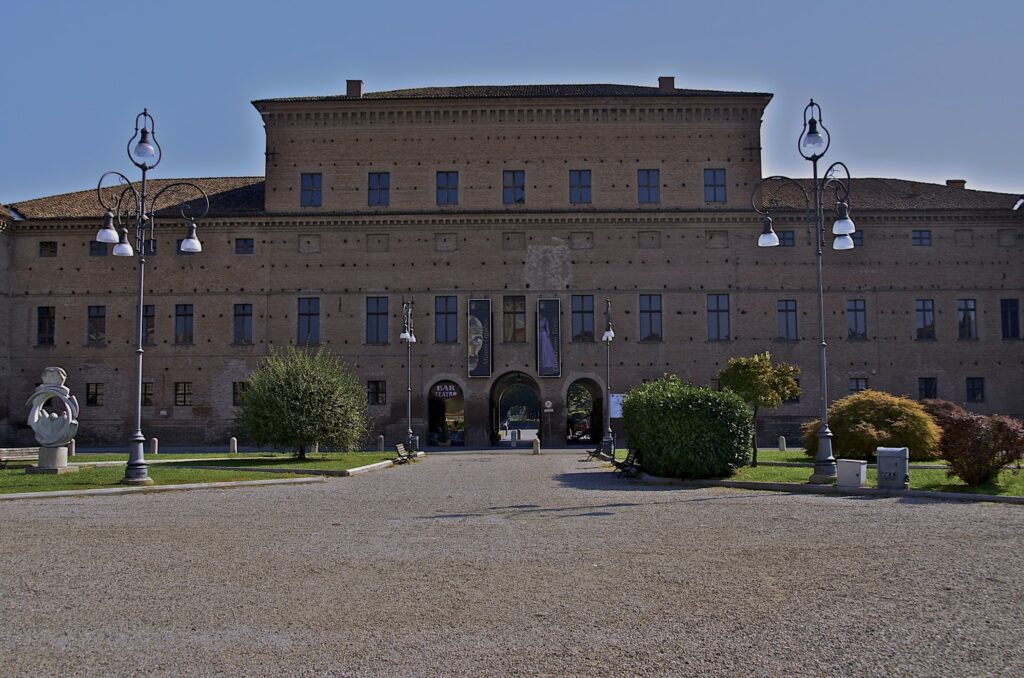
GUALTIERI
Located in the lowlands of Reggio Emilia, Gualtieri is a small village rich in history, places and stories to discover. Not to be outdone are the landscapes, perfect for cycling excursions and water adventures. It lays claim to its medieval origins, but above all it screams an astonishing Renaissance development. The heart of the town is the scenic Piazza Bentivoglio designed by Giovan Battista Aleotti, ‘one of the most beautiful squares in Italy’ according to art historian Cesare Brandi. It is overlooked by the Clock Tower, the Collegiate Church of Santa Maria della Neve and Palazzo Bentivoglio. The latter, in particular, is a treasure trove of treasures such as the magnificent Salone dei Giganti, frescoed with scenes from Torquato Tasso’s Gerusalemme Liberata, or the Antonio Ligabue Museum, dedicated to one of Italy’s most famous naïf painters, who lived most of his life in Gualtieri. Leaving the square, the Church of the Immaculate Conception, the Church of Sant’Andrea and the Antonio Ligabue Museum House remain to be seen.
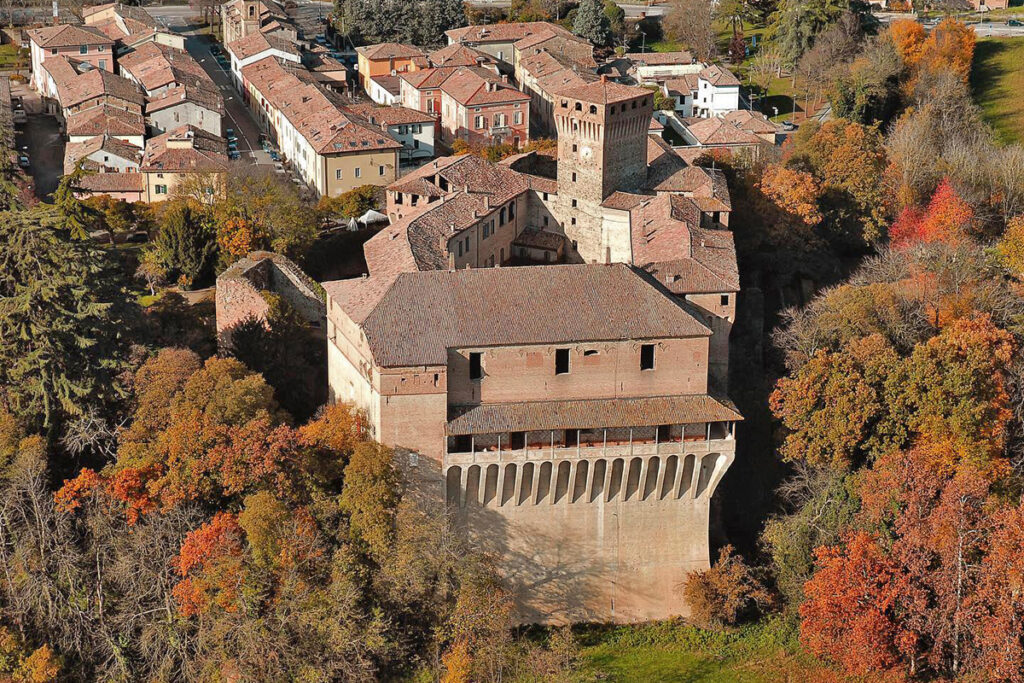
MONTECHIARUGOLO
Between the plain and the hill to the south-east of Parma lies the village of Montechiarugolo. Divided into five hamlets, it retains its medieval structure virtually intact and is organised around the majestic castle presumably founded around the 10th century but whose current structure dates back to the early 15th century. A tour of the castle includes a visit to the state flat (Salone delle feste, Camera di Mezzo, delle Sirene, dei Gatti), the 15th-century loggia on the Enza, the Camera picta del Baglione and the patrol walkway on the ramparts. The village contains numerous religious architectures, among which the Church of San Quintino stands out, with its Byzantine exterior and Classical interior, which houses valuable terracotta works and 15th-century frescoes. Also noteworthy is the Palazzo Civico, dating back to the late 16th century and now used for temporary exhibitions.
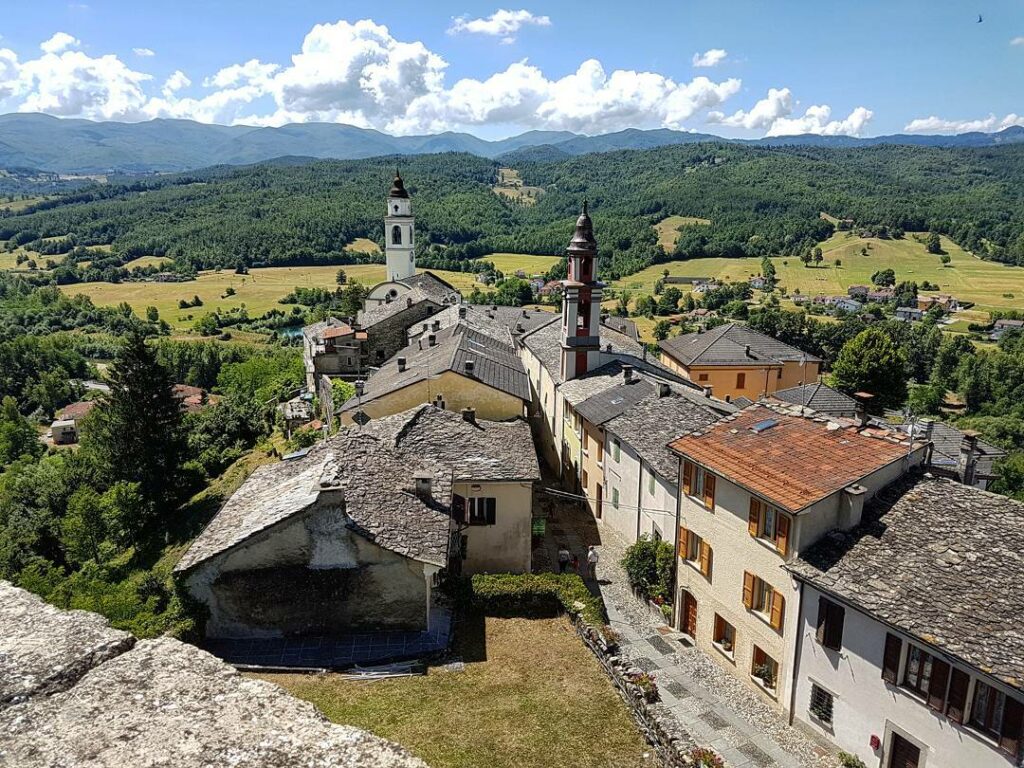
COMPIANO
Also in the province of Parma is Compiano, a delightful medieval village that is said to have been the origin of the title of ‘Prince’ of the royal family of Monaco. Completely surrounded by walls (which offer a beautiful walk along the valley), it is dominated by the thousand-year-old castle that rises behind it. Inside the manor you can visit: the Raimondi-Gambarotta collection, consisting of 17th-17th century furnishings and paintings bequeathed by the last owner; the Masonic Museum, which collects Masonic relics mostly of Anglo-Saxon, French, Indian and Italian derivation donated by Flaminio Musa; and the Wine and Food Museum, which displays period advertising materials, ancient utensils and tools related to the production and preservation of local foodstuffs. In addition to the castle, it is also worth visiting the Church of St. John the Baptist, inside which are artistic and sculptural elements of considerable value, such as the Holy Miraculous Crucifix, a wooden sculpture dating back to the 15th century.
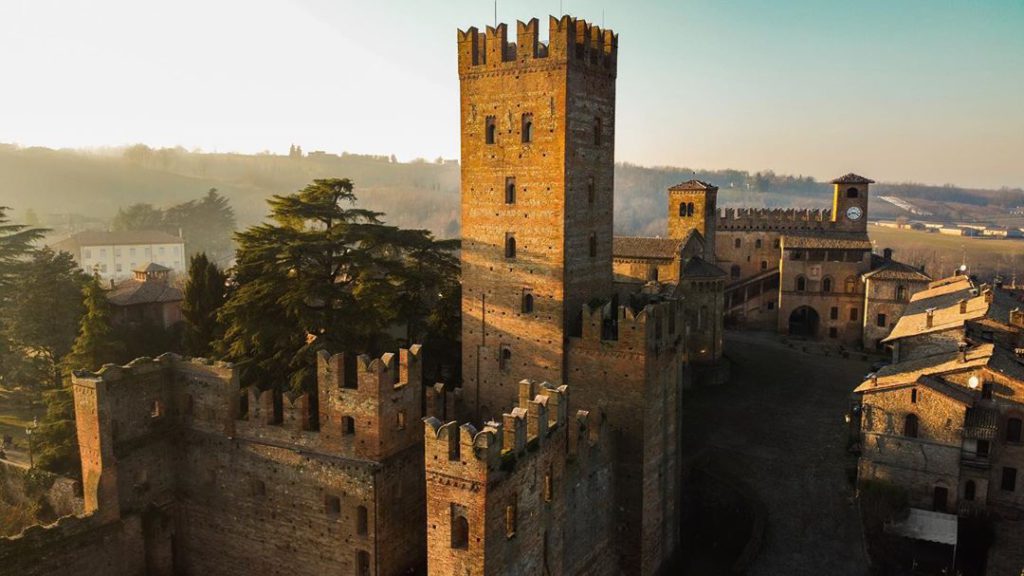
CASTELL’ARQUATO
Situated on the first Piacenza hill, Castell’Arquato is an art village of rare beauty. Strolling through its alleys will feel like going back in time. Visitors are struck by the grandeur of its monumental centre, represented by the large municipal square (considered one of the most beautiful in Italy) located in the upper part of the town. It is overlooked by: the Rocca Viscontea, built in 1342 at the behest of Luchino Visconti, whose function was exclusively military; the Palazzo del Podestà, dating back to the second half of the 13th century and currently used to host exhibitions of various kinds; and the Collegiate Church (with adjoining museum), one of the oldest churches in the area, which already existed in 756. Other things to see in the village include: the G. Cortesi Geological Museum, which features a permanent exhibition of fossils found in the surrounding areas; and the Luigi Illica Museum, dedicated to the famous playwright and librettist from Arquato.
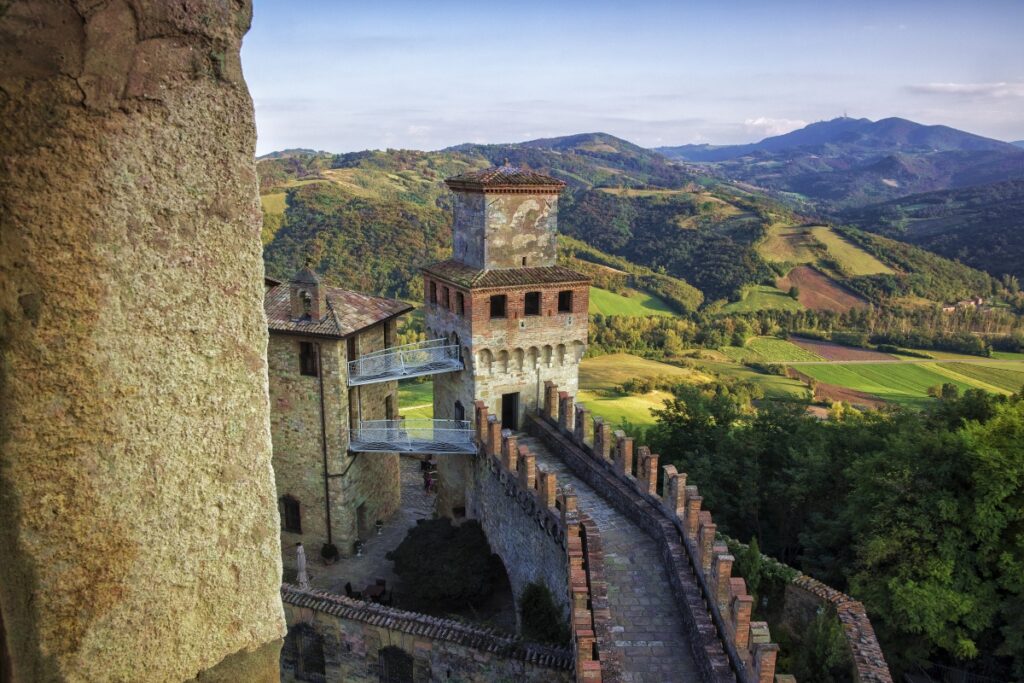
VIGOLENO
Located between Parma and Piacenza, Vigoleno is a castle-village where everything seems like a labyrinth in which you never know where you are, whether in the medieval village or in the castle. The imposing fortified complex, dating back to the 10th century, has been destroyed and rebuilt several times. In the 1920s, Princess Maria Ruspoli Gramont turned it into a kind of intellectual coterie. People of the calibre of Gabriele D’Annunzio, Max Ernst and Jean Cocteau have passed through its walls. From the main square, where there is a 16th-century fountain, going eastwards you reach the Church of San Giorgio, a distinguished Romanesque architecture that is one of the most representative in the Piacenza area. In addition to the castle and the Church of San Giorgio, the Museo degli Orsanti should not be forgotten, which collects evidence related to the life of the Orsanti, brave men, musician artists and animal trainers who, having left Compiano, travelled the world bringing their shows to the squares.
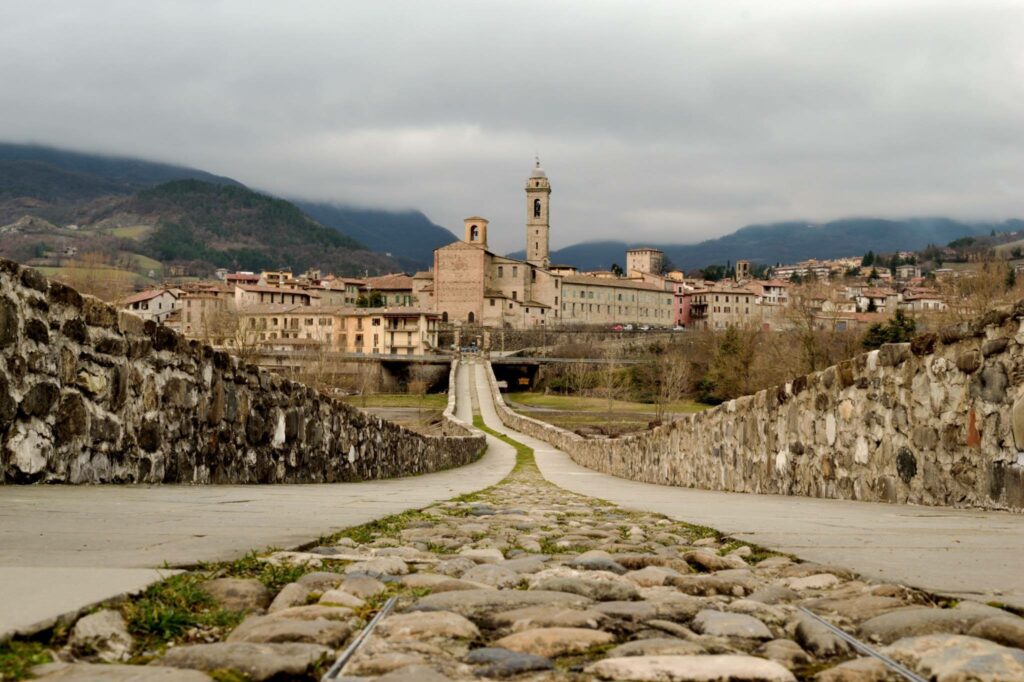
BOBBIO
Infine, l’ultimo borgo in Emilia che può fregiarsi di questo prestigioso riconoscimento è Bobbio, le cui origini si perdono nei secoli e la cui storia è strettamente intrecciata a quella della famosissima Abbazia di San Colombano, che fu per tutto il Medioevo uno dei più importanti centri monastici d’Europa. Il complesso abbaziale comprende: la Basilica di San Colombano, impreziosita da affreschi eseguiti da Bernardino Lanzani e da un suo aiutante intorno agli anni 1527-1530; il Museo della Abbazia, in cui sono esposti reperti principalmente ritrovati durante scavi nelle zone circostanti; il Museo Collezione Mazzolini, che mostra uno spaccato dell’arte del secondo Novecento; e il Museo della Città, che si propone come un percorso didattico introduttivo alle altre istituzioni museali e alla città intera. Tra le altre cose da vedere a Bobbio citiamo: il famoso ponte Vecchio, detto anche Gobbo o del Diavolo per il particolare profilo ondulato e contorto; il Castello Malaspina, che domina la parte alta della città; e la Cattedrale di Santa Maria Assunta, di fondazione romanica.
Photo © Travel Emilia Romagna
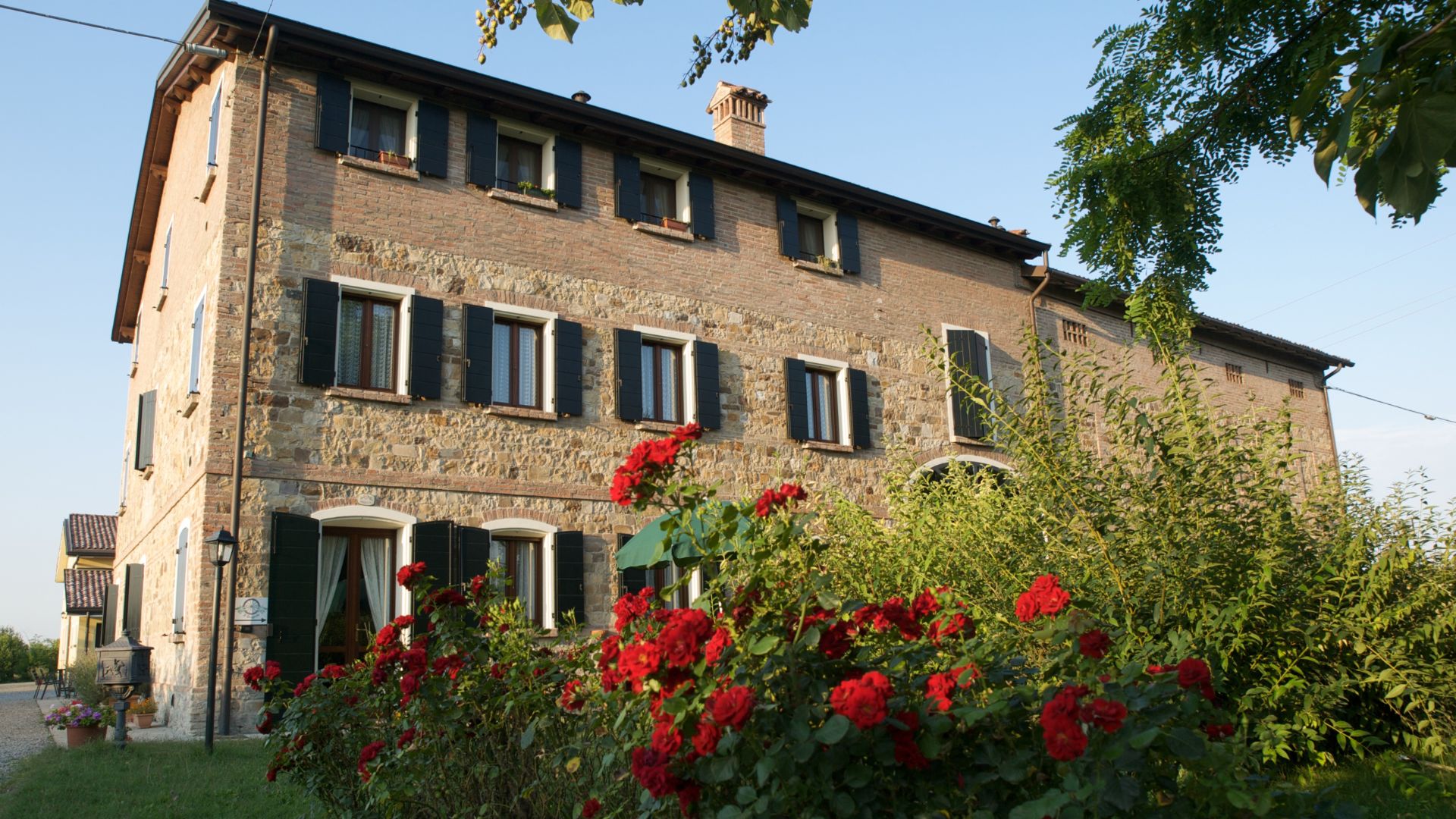
AGRITURISMO IL BRUGNOLO
Welcome to il Brugnolo
If you’re looking for completely independent apartments surrounded by greenery you really are in the right place here!
In fact, Brugnolo is immersed in the green nature of the Emilian countryside. For your relaxation, for that of your children, and again for the runs of your 4-legged friends, you will have 6000 square meters of park at your disposal!




